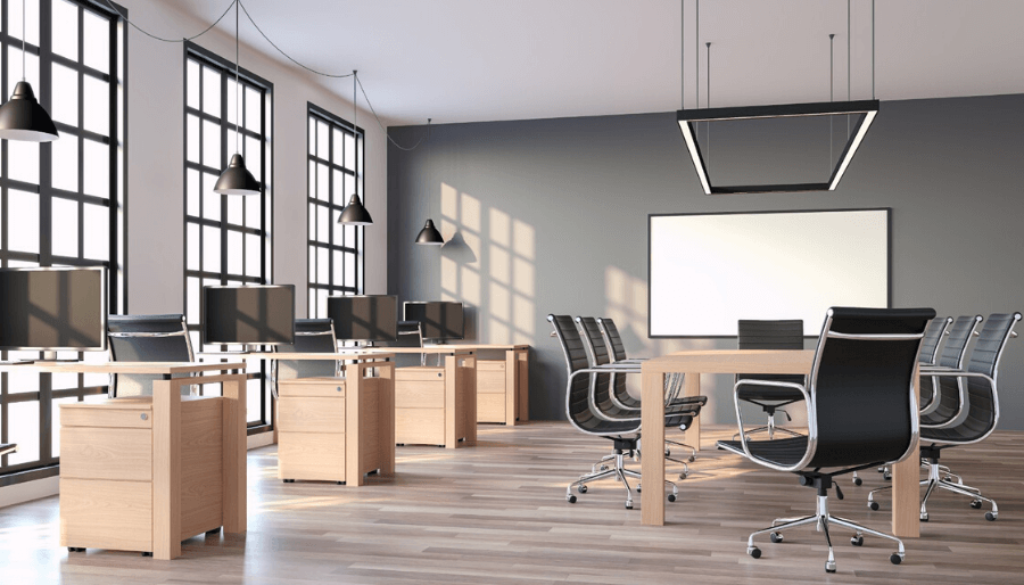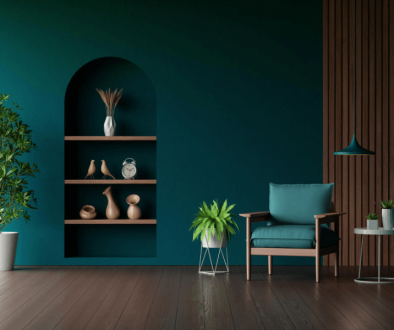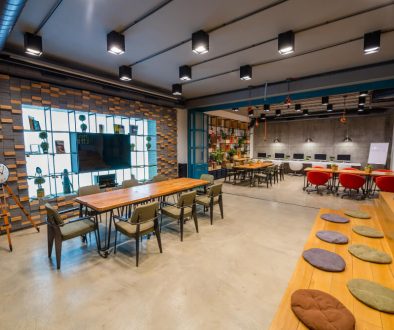Creative Office Lighting Ideas to Increase Workplace Productivity
The office lighting has an enormous impact on our overall performance and working abilities. One of the main factors affecting office productivity and ability to focus on is undoubtedly office lighting. Whether we speak of big companies with hundreds of employees sitting in open space setup or smaller offices with small cabins, lighting makes an impact and should be considered during design & renovation.
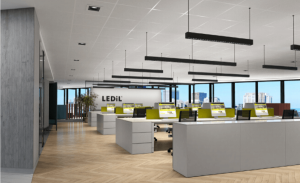
Traditional office lighting for commercial units is outdated & does not work in today’s dynamic world. Hence, working with modern office lighting ideas is indeed an imperative task.
Creative Office Lighting Ideas
1. Utilize natural light
Natural daylight is one of the best assets in office lighting as it can make an office look instantly brighter and more welcoming. Ideally, natural light should take the lead, with artificial lighting increasing the light to sufficient levels – the goal should be to make people feel connected to the outside world whilst being able to work comfortably.
Good levels of daylight in an office can increase productivity and sales by up to 40% and creativity by 15%. Employees who have more exposure to natural light sleep longer, exercise more and have a better quality of life than those exposed to less light.
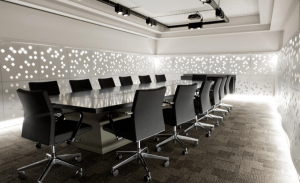
2. Fitting LEDs will save money and provide a better quality of light
Fluorescent tubes have long been the bulb of choice for offices as they are cheap to buy and fit, suitable to be installed in suspended ceilings, and can light large areas. Common problems with fluorescent tubes however include flickering and bulbs becoming dimmer with age, mean that the quality of light can be inconsistent.
This, combined with problems such as buzzing, means they are far from the ideal choice for offices. A popular alternative to fluorescent tubes, and one that we specify regularly in our designs, is the LED light. LEDs have often been seen as an expensive option for offices, but in the long term, they are more cost-effective than fluorescent lighting.
LEDs are far more energy-efficient than fluorescent tubes and other bulbs such as HID lamps, as LEDs last far longer and use much less wattage to operate.
3. Install a lighting control system
Lighting control systems are designed to save energy in an office building by responding to how each area of the office is used. Adding a lighting control system into an office redesign or fit-out means you can get the most out of any new lighting that has been installed in terms of performance and energy-saving capabilities.
As well as making the most out of natural daylight, lighting control systems will help you to save money by regulating the lighting in different areas of your office. Areas that aren’t in constant use, such as corridors, toilets and meeting rooms, will benefit from a lighting control system as this will ensure these areas are only lit when they are in use.
Occupancy control sensors ensure that the areas are lit when in use and that lights are switched off when they are not needed. Lighting control systems add a level of flexibility to lighting that is vital in modern offices.
4. Lighting suitable for every task
Each area of a modern office demands its own type of lighting to suit the requirements of the people working there. It’s vital that office lighting is incorporated into a newly designed office so that your employees can work comfortably and effectively. Open-plan offices can easily become flooded with artificial light as ceiling lighting has to be strong enough to illuminate people’s desks.
This can lead to glare from overhead fluorescent lighting and over-illumination, which can have a negative impact on people’s health and lead to unnecessary energy wastage. Lighting should be layered to avoid over-illumination, so instead of all the light coming from the ceiling, this general lighting is layered with ambient and task lighting, to allow greater control of how an individual’s workspace is lit. For example, an adjustable desk lamp provides extra light when working on specific tasks and an adjustable floor lamp will allow individuals to personalize their lighting.
5. Use lighting to zone different areas
Office lighting can reinforce your brand values and complement your office design to create a striking first impression. Lighting can help to define different areas in an open-plan office, optimizing the space available.
